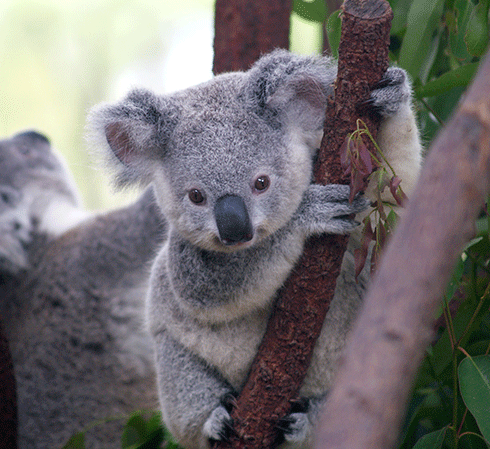
|
Published: 11 March 2014
Genetics gives clues to protecting koalas from development
After analysing genetic patterns in Queensland koalas, researchers have found that striking the right balance between tree cover and roads can help save animals threatened by urban growth.

|
|
Two environmental factors critical to the sustainability of koala populations are the extent of tree cover and the presence of highways and roads. Credit: ALA
|
‘Koala numbers have dropped massively over the past 15 years in southeast Queensland, and further urbanisation will affect them even more,’ says Dr Jonathan Rhodes of the National Environmental Research Program (NERP) Environmental Decisions Hub and The University of Queensland.
‘We need smarter and more cost-effective ways to keep our koalas while our cities continue to grow.’
Dr Rhodes explains that while koalas spend most of their time in trees, they move between trees on the ground.
‘When they move across landscapes to mate, they transfer their genes across the landscape too. The mixing of their genes across different areas is how they maintain genetic diversity, which is crucial for their health and survival.
‘By identifying koalas’ genetic connectivity – how their genes are distributed across landscapes – scientists can establish how viable a population is. We can also identify the main landscape features that influence this gene flow.’
In the study, published in the journal Molecular Ecology, the researchers examined koala samples collected across eight local government areas in southeast Queensland and explored how the amount of tree cover and roads affected the koalas’ gene flow.
The team found that genetic connectivity drops rapidly once the percentage of forest cover falls below 30 per cent. Areas with little or no forest cover had rates of gene flow three times lower than areas where foliage cover was 100 per cent.
‘We also found that the presence of highways reduces gene flow dramatically compared to areas without roads,’ Dr Rhodes says. ‘If you throw in a major highway, genetic dispersal is greatly impeded regardless of how much forest cover is present.’
The findings imply that koalas have a good chance of dispersing through an area if there is sufficient forest cover, Dr Rhodes says.
‘If you want to keep, create or maintain connections between koala populations, at least 30 per cent forest cover should be planned for.
‘Also, as highways impede gene flow, habitat bridges and underpasses beneath highways need to be implemented as they can play an important role particularly where highways are adjacent to koala habitats.’
Maintaining genetic diversity holds the key to the koalas’ long-term survival – and the only way for them to achieve this is to keep them moving, Dr Rhodes adds. ‘So it’s crucial to help them shift across highways and to preserve or restore eucalypt foliage cover.
‘Understanding the genetic connectivity of koalas can be used as a cost-effective and informative tool for conservation planning.
‘Sustaining gene flow is a major challenge when you are trying to minimise the impact of fragmentation on native wildlife, so it’s important to know what the factors are that influence gene flow when we design new urban areas.’
Source: NERP/University of Queensland



